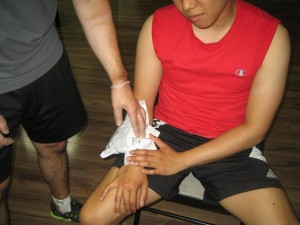Fact Checked
Overview Of A Snake Bite
- Snake bites can be lethal. It’s vital to respond quickly to bites. Call medical services immediately. If you are in an isolated region, getting the casualty to a medical facility is imperative.
- North America is home to several different species of deadly snakes. The most common is the rattlesnake. Antivenin is available, but it must be used as soon as possible.
Steps To Apply
- Protection first! Move away from the snake. That’s possibly why it struck in the first place. Follow standard safety measures and wear personal defensive gear if you have access to some.
- Call the paramedics right away! Waiting until the pain is gone might lead to tissue damage.
- Do not lift the casualty up. Keep the bite lower than the level of the heart.
- Rinse the affected area with lukewarm water and cover with soap.
- Get rid of tight clothing. The region might bloat and constricting clothes will result in tissue loss.
- If the snake is a coral snake or cobra, bind the region with a dressing. Remember to keep the bite lower than the level of the heart.
- Follow the essentials of first aid while waiting for the paramedics to turn up. Be prepared if the casualty goes into shock.

Tips
- No sucking or cutting! Those snake kits from the drug store are of no use. Cutting into the injury will just produce infection.
- Other prevention methods:
- Wear pants and boots that cover the ankle.
- Keep away from bushy areas.
- Do not move towards snakes, keep away from them.
- Do not expect rattlesnakes to make any sounds.
- If the snake is deceased, bringing it to the hospital is a good idea so the GP can examine what snake bit the casualty. Be vigilant, dead snakes can bite for up to one hour.
- It’s not that important to recognize the snake; medics in areas that are prone to snake bites can often classify the animal just by looking at the injury. Pit vipers have two incisors and the bite often has two tiny holes.
